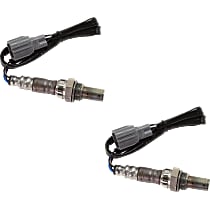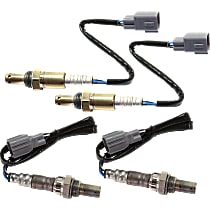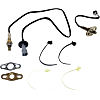{
"lazyNodes": false,
"abFitnotesFlag": false,
"abCrawlReviews": false,
"productOptionsCookie": false,
"orderDelayFlag": false,
"skipSessionCookie": false,
"covidMessage": false,
"fullTitleCookie": false,
"nrLoggerCookie": false,
"checkoutReviewCookie": false,
"productOptionSeqCookie": false,
"maintenanceFlag": false,
"bufferETACookie": false,
"multiShippingDiscountFlag": false,
"newFitmentFlag": false,
"surveyOptInFlag": false,
"crossSellFlag": false,
"skuMappingFlag": false,
"paySplitCookie": false,
"callDisableFlag": false,
"zipPaymentFlag": "u",
"hassleFreeReturn": false,
"lifetimeReplacement": false,
"cpn_off": false
}Toyota Tacoma Oxygen Sensors
Shop Catalog
![]() WARNING: This product can expose you to chemicals including Lead, which is known to the State of California to cause cancer and birth defects or other reproductive harm. For more information go to www.P65Warnings.ca.gov.
WARNING: This product can expose you to chemicals including Lead, which is known to the State of California to cause cancer and birth defects or other reproductive harm. For more information go to www.P65Warnings.ca.gov.
![]() WARNING: This product can expose you to chemicals including Lead, which is known to the State of California to cause cancer and birth defects or other reproductive harm. For more information go to www.P65Warnings.ca.gov.
WARNING: This product can expose you to chemicals including Lead, which is known to the State of California to cause cancer and birth defects or other reproductive harm. For more information go to www.P65Warnings.ca.gov.
![]() WARNING: This product can expose you to chemicals including Lead, which is known to the State of California to cause cancer and birth defects or other reproductive harm. For more information go to www.P65Warnings.ca.gov.
WARNING: This product can expose you to chemicals including Lead, which is known to the State of California to cause cancer and birth defects or other reproductive harm. For more information go to www.P65Warnings.ca.gov.
![]() WARNING: This product can expose you to chemicals including Lead, which is known to the State of California to cause cancer and birth defects or other reproductive harm. For more information go to www.P65Warnings.ca.gov.
WARNING: This product can expose you to chemicals including Lead, which is known to the State of California to cause cancer and birth defects or other reproductive harm. For more information go to www.P65Warnings.ca.gov.
![]() WARNING: This product can expose you to chemicals including Lead, which is known to the State of California to cause cancer and birth defects or other reproductive harm. For more information go to www.P65Warnings.ca.gov.
WARNING: This product can expose you to chemicals including Lead, which is known to the State of California to cause cancer and birth defects or other reproductive harm. For more information go to www.P65Warnings.ca.gov.
![]() WARNING: This product can expose you to chemicals including Lead, which is known to the State of California to cause cancer and birth defects or other reproductive harm. For more information go to www.P65Warnings.ca.gov.
WARNING: This product can expose you to chemicals including Lead, which is known to the State of California to cause cancer and birth defects or other reproductive harm. For more information go to www.P65Warnings.ca.gov.
![]() WARNING: This product can expose you to chemicals including Lead, which is known to the State of California to cause cancer and birth defects or other reproductive harm. For more information go to www.P65Warnings.ca.gov.
WARNING: This product can expose you to chemicals including Lead, which is known to the State of California to cause cancer and birth defects or other reproductive harm. For more information go to www.P65Warnings.ca.gov.
![]() WARNING: This product can expose you to chemicals including Lead, which is known to the State of California to cause cancer and birth defects or other reproductive harm. For more information go to www.P65Warnings.ca.gov.
WARNING: This product can expose you to chemicals including Lead, which is known to the State of California to cause cancer and birth defects or other reproductive harm. For more information go to www.P65Warnings.ca.gov.
![]() WARNING: This product can expose you to chemicals including Lead, which is known to the State of California to cause cancer and birth defects or other reproductive harm. For more information go to www.P65Warnings.ca.gov.
WARNING: This product can expose you to chemicals including Lead, which is known to the State of California to cause cancer and birth defects or other reproductive harm. For more information go to www.P65Warnings.ca.gov.
![]() WARNING: This product can expose you to chemicals including Lead, which is known to the State of California to cause cancer and birth defects or other reproductive harm. For more information go to www.P65Warnings.ca.gov.
WARNING: This product can expose you to chemicals including Lead, which is known to the State of California to cause cancer and birth defects or other reproductive harm. For more information go to www.P65Warnings.ca.gov.
![]() WARNING: This product can expose you to chemicals including Lead, which is known to the State of California to cause cancer and birth defects or other reproductive harm. For more information go to www.P65Warnings.ca.gov.
WARNING: This product can expose you to chemicals including Lead, which is known to the State of California to cause cancer and birth defects or other reproductive harm. For more information go to www.P65Warnings.ca.gov.
![]() WARNING: This product can expose you to chemicals including Lead, which is known to the State of California to cause cancer and birth defects or other reproductive harm. For more information go to www.P65Warnings.ca.gov.
WARNING: This product can expose you to chemicals including Lead, which is known to the State of California to cause cancer and birth defects or other reproductive harm. For more information go to www.P65Warnings.ca.gov.
![]() WARNING: This product can expose you to chemicals including Lead, which is known to the State of California to cause cancer and birth defects or other reproductive harm. For more information go to www.P65Warnings.ca.gov.
WARNING: This product can expose you to chemicals including Lead, which is known to the State of California to cause cancer and birth defects or other reproductive harm. For more information go to www.P65Warnings.ca.gov.
![]() WARNING: This product can expose you to chemicals including Lead, which is known to the State of California to cause cancer and birth defects or other reproductive harm. For more information go to www.P65Warnings.ca.gov.
WARNING: This product can expose you to chemicals including Lead, which is known to the State of California to cause cancer and birth defects or other reproductive harm. For more information go to www.P65Warnings.ca.gov.
![]() WARNING: This product can expose you to chemicals including Lead, which is known to the State of California to cause cancer and birth defects or other reproductive harm. For more information go to www.P65Warnings.ca.gov.
WARNING: This product can expose you to chemicals including Lead, which is known to the State of California to cause cancer and birth defects or other reproductive harm. For more information go to www.P65Warnings.ca.gov.
Top Rated Products
Popular Products
Product Questions & Answers
Customer Guides
Summary
- Oxygen sensors, also known as O2 sensors, examines the mixture of gasoline and oxygen entering or exiting the catalytic converter.
- An oxygen sensor that’s installed right before the catalytic converter is called Sensor 1 or upstream, while the one after the catalytic converter is called Sensor 2 or downstream.
- O2 sensors are also categorized into two product fitting types known as direct-fit and universal.
- An OE replacement oxygen sensor for the Toyota Tacoma typically cost around $40 to $310.
- Symptoms of failing O2 sensors include poor fuel economy, black smoke, and engine performance problems.
Introduced as the replacement for the Toyota Pickup midsize pickup segment in the US market, the Toyota Tacoma is an effort to meet the standards of Canadian and American consumers. Its first-generation model was first introduced in the market in 1995 and lasted until 2004. The succeeding generation received MotorTrend’s Truck of the Year title in 2005, while the third generation model lives on to continue its legacy.
In 2018, Toyota sold over 245,000 units of the Tacoma, rendering a 24% boost in that year’s sales. This performance was what made it surpass one of its tightest competitors, the Ford Ranger.
For the Toyota Tacoma to function efficiently, it needs a properly working oxygen sensor. Here are the things you need to know about oxygen sensors.
What is an oxygen sensor?
Oxygen sensors, also known as O2 sensors, examines the mixture of gasoline and oxygen entering or exiting the catalytic converter. The information is used to keep track of the catalytic converter’s efficiency. This device is installed along the exhaust stream and does not directly read the amount of oxygen entering the engine.
However, when the information provided by the oxygen sensor is analyzed by your vehicle’s computer together with the findings of other sources, you’ll get an indirect data about the engine’s air-fuel ratio.
What are the types of oxygen sensors?
There are two types of oxygen sensors depending on where they are installed. An oxygen sensor that’s installed right before the catalytic converter is called Sensor 1 or upstream, while the one after the catalytic converter is called Sensor 2 or downstream.
Upstream
Located along the exhaust stream before the catalytic converter, an upstream oxygen sensor analyzes and measures the amount of pollutants entering the catalytic converter. It can also detect unburned fuel coming directly from the combustion chambers.
Downstream
Due to it being mounted after the catalytic converter, the downstream oxygen sensor’s job is to measure the contaminants that had made through the converter. Both data from the two sensors are compared by your vehicle’s computer. If the data are similar, the computer will trigger a catalyst check engine code that switches the Check Engine warning light on.
Should you go universal or direct fit?
Before you buy yourself an oxygen sensor replacement, you need to make sure you are looking at the right part. In our catalog, O2 sensors are also categorized into two product fitting types.
Direct-fit oxygen sensors
Direct-fit oxygen sensors are OE replacement parts. Meaning, the installation of the part won’t be rigorous, as it installs just like the stock one.
Universal oxygen sensors
Also called as a base sensor, a universal oxygen sensor does not include a direct fit connector. Wire cutting and splicing are often required when installing it on your car.
Finding the right fit for your Toyota Tacoma
There are three generations of the Toyota Tacoma as of 2019. It would be best for you to indicate full year, make, and model details on the filter tab in the search menu. This way, the website would be able to generate specific parts that perfectly fits your vehicle. You may further enhance the list by filtering the price range, location of installation, quantity or package, or product fitting.
How much is a Toyota Tacoma oxygen sensor OE replacement?
An OE replacement oxygen sensor for the Toyota Tacoma typically cost around $40 to $310. Items are sold either individually or in sets. You may acquire it in sets of two, three, or four. Although you can install oxygen sensors all by yourself, we still recommend seeking a certified mechanic’s help as the installation could expose you to harmful chemicals like Lead.
Symptoms of failing oxygen sensors
Due to exposure to emission gases, oxygen sensors tend to get polluted with carbon and gunk particles that could clog the stream and wear the component down sooner than its expected lifespan. If your oxygen sensors get too worn out, it won’t transmit information to your vehicle’s system efficiently. Worst, the part could fail completely and stop operating. Losing an oxygen sensor is one of the reasons why you should never ignore a Check Engine light on your instrument cluster. Aside from a Check Engine warning light, a failing oxygen sensor also puts out signs like:
Poor fuel economy
A worn-out oxygen sensor might disrupt your engine’s air-fuel ratio, which could end up to irregular fuel injection into the engine. If this happens, your mileage could significantly drop, as the amount of fuel injected into the engine exceeds what’s necessary. This could also drop your vehicle’s power output.
Black smoke and stinky smell
The excessive amount of fuel entering your engine can produce sulfuric acid, which produces the unpleasant smell and black smoke from your exhaust pipe. Another thing is, you could also end up filling more fuel than normal.
Stalling and misfiring
One job of the oxygen sensor is to regulate your engine’s timing. If it fails to do this, you’ll start feeling rough idling behavior, which could lead to engine misfiring and stalling if not addressed immediately. More engine performance problems can occur so consider visiting your certified mechanic as soon as minor issues arise.






























